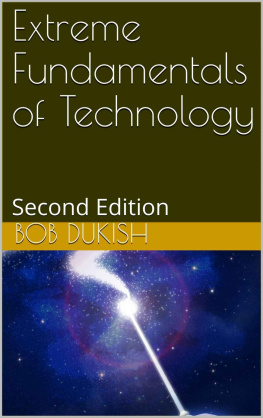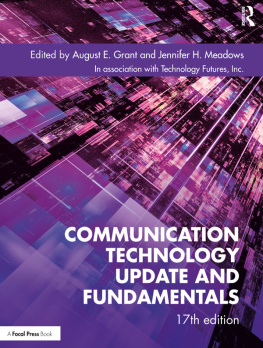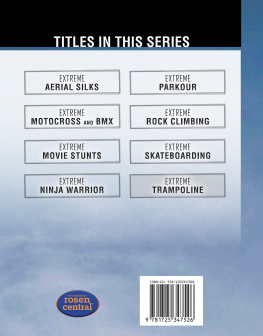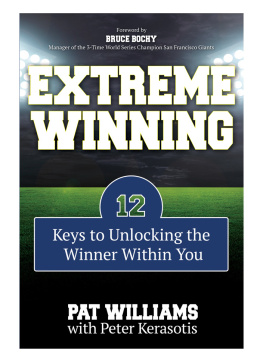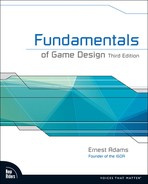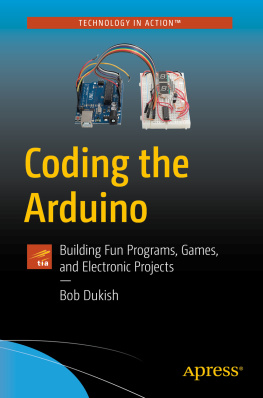Bob Dukish - Extreme Fundamentals of Technology : Second Edition
Here you can read online Bob Dukish - Extreme Fundamentals of Technology : Second Edition full text of the book (entire story) in english for free. Download pdf and epub, get meaning, cover and reviews about this ebook. year: 2021, genre: Children. Description of the work, (preface) as well as reviews are available. Best literature library LitArk.com created for fans of good reading and offers a wide selection of genres:
Romance novel
Science fiction
Adventure
Detective
Science
History
Home and family
Prose
Art
Politics
Computer
Non-fiction
Religion
Business
Children
Humor
Choose a favorite category and find really read worthwhile books. Enjoy immersion in the world of imagination, feel the emotions of the characters or learn something new for yourself, make an fascinating discovery.
- Book:Extreme Fundamentals of Technology : Second Edition
- Author:
- Genre:
- Year:2021
- Rating:5 / 5
- Favourites:Add to favourites
- Your mark:
- 100
- 1
- 2
- 3
- 4
- 5
Extreme Fundamentals of Technology : Second Edition: summary, description and annotation
We offer to read an annotation, description, summary or preface (depends on what the author of the book "Extreme Fundamentals of Technology : Second Edition" wrote himself). If you haven't found the necessary information about the book — write in the comments, we will try to find it.
Bob Dukish: author's other books
Who wrote Extreme Fundamentals of Technology : Second Edition? Find out the surname, the name of the author of the book and a list of all author's works by series.
Extreme Fundamentals of Technology : Second Edition — read online for free the complete book (whole text) full work
Below is the text of the book, divided by pages. System saving the place of the last page read, allows you to conveniently read the book "Extreme Fundamentals of Technology : Second Edition" online for free, without having to search again every time where you left off. Put a bookmark, and you can go to the page where you finished reading at any time.
Font size:
Interval:
Bookmark:
Extreme Fundamentals of Technology
A Primer of Computers, Electronics, and Technology
Second Edition
By Bob Dukish
Copyright 2020 by Dukish LLC
All rights reserved. This book may not be reproduced and may not be copied by any means, including electronic, mechanical, recording or photocopy, or by any document storage and retrieval system, without the written permission of the author. The projects are presented without any claim of suitability.
Website: www.dukish.com
Published by Dukish LLC
Warning:
Electrical circuits and components may contain lethal voltages even when disconnected. Do not attempt to test, modify, or repair electrical equipment. Hazardous voltages are present when equipment covers are removed.
Preface
The original book, and now the second update, is an introductory guide to basic science and engineering concepts useful to people of all ages who are interested in technology. We originally developed the idea of Extreme Technology at an advisory committee meeting for a County Career and Technical Center, as a way to gain higher interest from prospective students to pursue a college-level engineering program of study. The underlying goal of Extreme Technology is to present the needed background information to students, but then allow them to explore subjects in science and technology in creative and innovative ways. The latest cutting-edge methodology in Education is to incorporate project and problem-based learning. We take the learning approach to a higher level by adding what we term as predictable unpredictability into the curriculum. In many current programs utilizing these methods, such as Project Lead the Way, the students are introduced to the related concepts and given a constrained set of exercises and materials for hands-on kinesthetic activities. They then progress through a predetermined lesson to reach a terminal performance outcome. We accomplish the same standards, but unconventionally, in a way that is far more interesting to both students and teachers. Extreme Technology Education may seem haphazard to the casual observer. Not all projects are hands-on because the technology may not yet be in existence, and not all problems can be solved because there may be a need for more scientific research. The Extreme Technology pedagogy allows the student to dream, invent, and think laterally, while applying known concepts to explore the unknown. In developmental psychology, it is believed young children go through a stage early in life where they exhibit animism as they see the world as somewhat magical. We want to allow our students to return to this way of thinking but supplied with the tools to make the magic more than just make-believe. The book is designed for both high school and adult learners to understand current technology, and to act as a reference for the exploration of futuristic technology.
Changes to the second edition
Time marches on, and the years flew by since the release of the first edition. More than ten years have elapsed, and the world has evolved to depend on more streamlined and powerful technological products led by the cellphone. Now with 5-G devices, the connectivity speeds will provide a conduit for much higher data flow and more processing within the cloud. Individual processors have gotten much faster and have become highly miniaturized for computers, cellphones, and Internet of Things (IoT) devices. The miniaturization is also leading to a wide variety of very inexpensive smart products. As devices become more functional and less expensive, they turn into somewhat of a commodity item and are not given a second thought, just as one does not think much about the toaster's construction when making breakfast. It is very gratifying to see the rise of the maker community growing in numbers and hacking and tinkering with new ideas. Much of the credit goes to the Arduino project's founders, Massimo Banzi, David Cuartielles, David Mellis, and others, who developed an easy-to-understand programming language that evolved from the earlier platforms called Wiring and Processing . They incorporated an easy to use language with an excellent IDE for use with a low-cost processor, the Atmel ATmega, for programming an inexpensive open-source development board. Today the Arduino microcontroller community numbers in the millions.
The other contributor to the surge in the maker movement was the advent of the Raspberry Pi . It is beautiful for computer education in schools and uses as an extremely low-cost alternative to PCs for those in the developing world. The Raspbian operating system is very efficient, and the Pis hardware makes it a valid substitute for a standard PC. I can see how a young person can develop an affinity to the Pi with the visibility of the board's components and connectors. With its powerful multi-core processor and Internet connectivity, it runs beautifully as a computer. One of the project goals is to have the users get familiar with coding through the use of a modular method called Scratch , or with HTML webpage code, and ultimately with Python one of todays most popular programming languages. Just as with Arduino aficionados, the Pi community has many Webpages and online resources available.
Both the Arduino and Raspberry Pi are reasons for a large amount of interest in the maker movement. Each has its purpose with some small amount of overlap. The Arduino is a microcontroller and can be used with many types of input sensors to operate devices such as lighting or sounding indicators, for controlling motor movements, or sending data via bus or Bluetooth. Both can and even work as an IoT device. The Raspberry Pis purpose is more of what could be considered a standard computer. It additionally has the ability for I/O, and with its low-cost, the Pi is sometimes used for projects where it acts as a controller.
Going from a small number of people in the early computer days exchanging messages on Newsgroups through USENET, we now find almost all people in the developed world addicted to social messaging platforms like Facebook, Twitter, TikTok, etc. It is effortless to use phone apps, and sometimes we use them at our peril with risks to our reputations. Just the other day, I made what I thought was a very humorous comment on a post by Massimo about the latest Arduino and got a response from him saying something to the effect, Dont look at your nose, look at the Moon. I am now second-checking what I think is funny before posting to social media. Sorry, Massimo! (Im a huge fan of Arduino.) I doubt if the Pandemic had increased social media usage because the saturation had to be nearly 100 percent before social distancing took effect. This past year I attended a party in a beautiful park on a warm autumn day. The leaves were at their peak colors, and the park was just extraordinary. I used my phone to snap a picture of a group of around ten friends. They werent enjoying the parks beauty, nor were they talking or looking at each other; instead, they were each glued to their phone screens, either messaging or scrolling through social media posts. I think we have created a monster and a blight on society, but the technology behind the scenes is what is exciting.
There are vast amounts of products and applications for the use of basic technology, and this book is about technologys most fundamental aspects. If you are old enough, you may remember the childs toy called an erector set, and we all are most certainly familiar with Legos. This book aims to provide a basic knowledge of a wide breadth of fundamental concepts in a similar way to understanding the pieces of an Erector or Lego set. A profound understanding of fundamental building blocks will help you to use your creativity to build marvelous devices. Additionally, the fundamental building blocks stay fairly consistent over a long time and is one of the reasons it was not necessary until now to update this book. Much of the text has only been expanded to reflect the underlying concepts of some of the popular products we see today. Software is ever-present in todays Maker Movement, and this edition delves deeper into that area. We also introduce more project applications along with the fundamental concepts on which they are built. We also have included chapter summaries so that the takeaway is more evident. Some of the information has been repositioned from the last edition to help with the flow of material. This edition has been more strictly edited to make some areas less ambiguous. It would help to follow the math by jotting down the formulas and solutions to problems with numerators on the top of a fraction and denominators on the bottom. They are sometimes shown on a single line in the eBook for formatting reasons. I hope the content we cover will help in your future endeavors.
Next pageFont size:
Interval:
Bookmark:
Similar books «Extreme Fundamentals of Technology : Second Edition»
Look at similar books to Extreme Fundamentals of Technology : Second Edition. We have selected literature similar in name and meaning in the hope of providing readers with more options to find new, interesting, not yet read works.
Discussion, reviews of the book Extreme Fundamentals of Technology : Second Edition and just readers' own opinions. Leave your comments, write what you think about the work, its meaning or the main characters. Specify what exactly you liked and what you didn't like, and why you think so.

